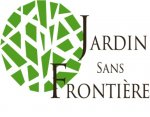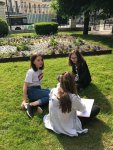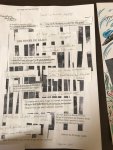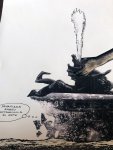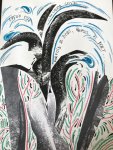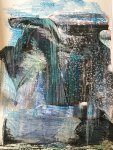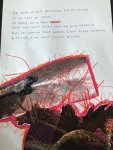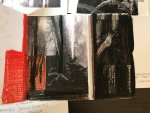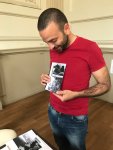accueil site > 45. Archives > Paysage et patrimoine > 12. Pedagogic tools > 17. Pedagogic tools > 090. 10 - Little factory of literature in the garden 2. Haikus and (...)
-
45. Archives
-
Paysage et patrimoine
-
01. Fiches pédagogiques
Disciplines
-
01. Teaching materials
Disciplines
-
02. Jardin sans frontière : une école pour développer les compétences -clés en Europe
- 04. Partenaires
- 05. Rencontres transnationales
- 14. À l’école du jardin. Mobilités de formation dans les jardins d’Europe
- 15. À l’école européenne du jardin. Paroles de formateurs sur leurs formations "entre pairs"
- 16. A l’école auropéenne du jardin. Paroles d’apprenants sur leurs mobilités Erasmus+
- 19. Petit glossaire "européen" du jardin
- 20. Dissémination
- 21. Exploitation locale du projet
- 03. Un nouvel Erasmus+ : Le bleu européen comme étendard contre l’exclusion des adultes
-
09. Erasmus+ partenariato
-
Cammini del Blu in Europa
- 01. Incontri transnazionali
- 05. Progetti blu di partners
- 10. Percorsi europei del Blu
- 20. Storie blu
- 40. Disseminazione
- 43. Transcultural Carpet Blue
- 45. Missive blu
- 46. Glossario blu
- 47. Schede didattiche "Pedagogia del colore blu in Europa"
- 48. Illustrazioni delle schede didattiche : Mostra delle opere degli studenti
-
Giardino senza frontiere. Una scuola per lo slivuppo di competenze chiave in Europa
- 04. Partners
- 05. Riunioni transnazionali
- 14. Alla scuola del giardino. Mobilità di formazione nei giardini d’Europa
- 15. Alla scuola del Giardino. Parole di formatori sul loro addestramento "tra pari"
- 16. Alla scuola del giardino. Parole dei discenti sul loro Erasmus + Mobilità
- 19. Piccolo glossario europeo del giardino
-
Cammini del Blu in Europa
-
11. Erasmus+ Partnership
- 01. Transnational Meetings
- 05. Blue Projects of partners
- 07. European roads of the Blue
- 10. Blue stories
- 40. Dissemination
- 43. Transcultural Carpet Blue
- 45. Blue Missives
- 46. Blue Glossary
- 48. Roads of the blue : the file
- 50. Illustrations of the pedagogic file : exhibition of works of learners
-
51. Garden Without Borders : A School for Developing Key Competences in Europe
- 04. Partners
- 05. Transnational meetings
- 14. At Garden School. Training mobilities in the gardens of Europe
- 15. At Garden School. Words of trainers on their "peer-to-peer" training
- 16. At Garden School. Learners’ words about their mobility Erasmus +
- 19. Small European glossary of the garden
- 20. Dissemination
-
11. Partenariats Erasmus+
-
01. Les chemins du bleu en Europe
- 01. Rencontres transnationales
- 05. Projets bleus des partenaires
- 10. Routes du Bleu en Europe ...
- 20. Histoires Bleues
- 40. Dissémination
- 43. Transcultural Carpet Blue
- 45. Missives bleues
- 46. Glossaire bleu
- 47. Formation pédagogique : fiches pédagogiques et référentiel de compétences clés et transversales
- 50. Illustrations des fiches pédagogiques : exposition des travaux des apprenants
-
01. Les chemins du bleu en Europe
- 12. Pedagogic tools
- 17. Fiches pédagogiques
- 17. Schede Pedagogiche
-
01. Fiches pédagogiques
- 05. Livre d’or des formations
- 07. Livre d’or des formations Comenius - Grundtvig
- 10. National
- 20. International
-
Paysage et patrimoine
090. 10 - Little factory of literature in the garden 2. Haikus and Centonessamedi 8 septembre 2018
PROJECT
Mastering the language starting from a palette of personal words worked out during the exploration of a plant garden.
Haiku : to combine the words in a simple way following the poetical genre of Haiku, a poetical composition with a limited number of syllables, born in Japan in XVII century.
Cento : a form of writing, a literary play, appreciated by the XVIII century society, based on the combination of short, various texts from literature and visual arts.
Our ’Little Factory of Literature’ is based on the works of OULIPO, acronym for ’Ouvroir de Literature Potentielle’. It was the project of an international association of enthusiasts of literature founded in 1960 by the writer Raymond Queneau and the mathematician Francois Le Lionnais, which was joined by artists such as Italo Calvino and Georges Pérec.
PUBLIC
This pedagogical approach was experimented and worked out in the Gardens of Versailles and of Saint-Germain-en-Laye (Yvelines, France) by European teachers during a peer-to-peer training course, from 4 to 8 June, aimed at the development of the key-competences of their students.
These methodology has also been utilised with different categories of learners
![]() young students from 15 to 18 risking school drop-out who participated in a learning mobility in the Botanical Garden of Granada (Spain)
young students from 15 to 18 risking school drop-out who participated in a learning mobility in the Botanical Garden of Granada (Spain)
![]() unemployed young adults from 18 to 25 from the Local Mission of Saint-Germain-en-Laye in need to improve their qualifications and key-competences in view of a future job
unemployed young adults from 18 to 25 from the Local Mission of Saint-Germain-en-Laye in need to improve their qualifications and key-competences in view of a future job
![]() primary pupils and college students of the municipalities of Sant-Germain Boucle de Seine, France.
primary pupils and college students of the municipalities of Sant-Germain Boucle de Seine, France.
KEY COMPETENCES
![]() Communication in the mother tongue
Communication in the mother tongue
![]() Social competences and citizenship
Social competences and citizenship
![]() Humanist culture and expression of sensitivity
Humanist culture and expression of sensitivity
OBJECTIVES
![]() To discover and experiment simple, though productive and motivating techniques related to creative writing
To discover and experiment simple, though productive and motivating techniques related to creative writing
![]() To develop skills apt to empower expression by acquiring cultural enrichment and techniques related to verbal and visual language
To develop skills apt to empower expression by acquiring cultural enrichment and techniques related to verbal and visual language
![]() To work out communicative situations apt to raise self-confidence and fluency
To work out communicative situations apt to raise self-confidence and fluency
GARDENS EXPLORED
![]() Petit Parc of the Castle of Versailles, France
Petit Parc of the Castle of Versailles, France
![]() Park of the Castle of Saint-Germain-en-Laye
Park of the Castle of Saint-Germain-en-Laye
![]() Botanical Garden of Granada, Spain
Botanical Garden of Granada, Spain
MATERIALS
![]() Writing material : notebook, crayons
Writing material : notebook, crayons
![]() For Haiku : scented leaves and flowers
For Haiku : scented leaves and flowers
![]() For Centones : photocopies of a selection of works from different artists on the subject of the garden, notebook, scissors, glue, pastels.
For Centones : photocopies of a selection of works from different artists on the subject of the garden, notebook, scissors, glue, pastels.
DEVELOPMENT
![]() Sensory exploration in the garden, choose a place, some flowers or a tree that attract you. Approach them. - Touching, feeling, observing them are all actions allowing the ’possession’ of them.
Sensory exploration in the garden, choose a place, some flowers or a tree that attract you. Approach them. - Touching, feeling, observing them are all actions allowing the ’possession’ of them.
1. HAIKU
Writing words
![]() With the plant in your hands, write 5 words as they come to your mind, first using the sense of sight, then of touch and finally that of smell.
With the plant in your hands, write 5 words as they come to your mind, first using the sense of sight, then of touch and finally that of smell.
![]() On the same paper write down some infinitive verbs with the same prevailing sound. Then the learners will be asked to identify soft and harsh sounds, followed by a debate whenever the identifications are in contrast. Here the teacher will supply the appropriate explanations.
On the same paper write down some infinitive verbs with the same prevailing sound. Then the learners will be asked to identify soft and harsh sounds, followed by a debate whenever the identifications are in contrast. Here the teacher will supply the appropriate explanations.
![]() This will create a continuous exchange from individual and collective actions.This will also account for the fact that all answers may be acceptable, and no answer is ’wrong’.
This will create a continuous exchange from individual and collective actions.This will also account for the fact that all answers may be acceptable, and no answer is ’wrong’.
Writing haiku
![]() After creating a ’bank of vocabulary’, you can pass to the writing of a short text. The haiku poem linked to sensations will not be difficult for a learner presenting poor linguistic skills.
After creating a ’bank of vocabulary’, you can pass to the writing of a short text. The haiku poem linked to sensations will not be difficult for a learner presenting poor linguistic skills.
![]() An individual production of 20/30 minutes will take place before going back to the collective activity represented by the reading of the texts. This action carried out together will highlight the level of unconscious creativity present in each individual and will have an effect on his/her confidence thanks to words and poetry.
An individual production of 20/30 minutes will take place before going back to the collective activity represented by the reading of the texts. This action carried out together will highlight the level of unconscious creativity present in each individual and will have an effect on his/her confidence thanks to words and poetry.
2. CENTONES Presentation of the cento and its rules : select some excerpts of poems or prose and combine them together in order to create a new text. The word has a Latin origin and originally it referred to a sort of fabric patchwork.
![]() Verbal cento
Verbal cento
Select many short texts from different works. Put them together like in a collage. Make sure they rhyme or are compatible and add the linking words. Rewrite the sentences to compose a personal text.
![]() Visual cento
Visual cento
Start from a selection of works to compare, especially on the subject of the interpretation of the garden and technical methods.
Following the same outline of the verbal cento, cut some pieces from each work, put them together and create a new and original work.
EXTENSION
![]() Create a collection of haiku poems. Take photos, drawings or paintings at your will
Create a collection of haiku poems. Take photos, drawings or paintings at your will
![]() Write the haiku poems on dried autumn leaves. Arrange a performance in the garden where to scatter the ’written leaves’. Realize a ’Herbarium of Haiku Poems written on Leaves’
Write the haiku poems on dried autumn leaves. Arrange a performance in the garden where to scatter the ’written leaves’. Realize a ’Herbarium of Haiku Poems written on Leaves’
See the herbarium realised by the students of the college Marcel Roby, Saint-Germain-en-Laye
See the centones realised by the professors in the gardens of Saint-Germain-en-Laye and Versailles
See the centones realised by the pupils of the Elementary School André Bonnenfant, Saint-Germain-en-Laye
EVALUATION
It takes into account the ability to :
![]() master the oral and written mother tongue : convey orally and in writing the vocabulary discovered related to the garden, create the haiku poems and the centones respecting syntax rules, re-use the same writing models in other contexts
master the oral and written mother tongue : convey orally and in writing the vocabulary discovered related to the garden, create the haiku poems and the centones respecting syntax rules, re-use the same writing models in other contexts
![]() develop awareness and cultural expression : get some keys useful for reading works of art, express points of view on the techniques employed, grow interest in the artists discussed and their works
develop awareness and cultural expression : get some keys useful for reading works of art, express points of view on the techniques employed, grow interest in the artists discussed and their works
![]() develop social and civic competences : get confidence, dialogue, debate
develop social and civic competences : get confidence, dialogue, debate
AUTHORS
![]() Alexandra Koszelyk, college teacher, writer and trainer in Humanities
Alexandra Koszelyk, college teacher, writer and trainer in Humanities
![]() Aline Rutily, essayist, visual artist and trainer in Visual Arts, Association Paysage et Patrimoine Sans Frontière, Saint-Germain-en-Laye, France
Aline Rutily, essayist, visual artist and trainer in Visual Arts, Association Paysage et Patrimoine Sans Frontière, Saint-Germain-en-Laye, France
TRANSLATER
Mary Gino
Association Acquamarina, Trieste















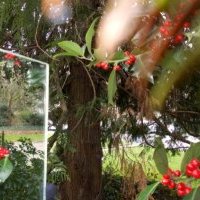
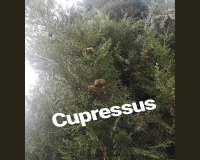
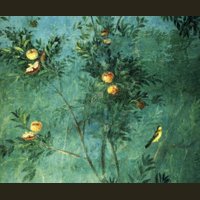
 Version imprimable
Version imprimable